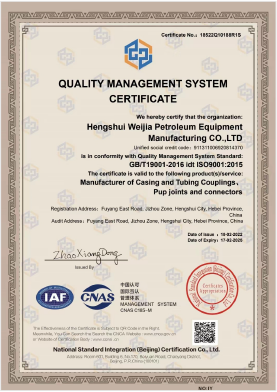- Afrikaans
- Albanian
- Amharic
- Arabic
- Armenian
- Azerbaijani
- Basque
- Belarusian
- Bengali
- Bosnian
- Bulgarian
- Catalan
- Cebuano
- Corsican
- Croatian
- Czech
- Danish
- Dutch
- English
- Esperanto
- Estonian
- Finnish
- French
- Frisian
- Galician
- Georgian
- German
- Greek
- Gujarati
- Haitian Creole
- hausa
- hawaiian
- Hebrew
- Hindi
- Miao
- Hungarian
- Icelandic
- igbo
- Indonesian
- irish
- Italian
- Japanese
- Javanese
- Kannada
- kazakh
- Khmer
- Rwandese
- Korean
- Kurdish
- Kyrgyz
- Lao
- Latin
- Latvian
- Lithuanian
- Luxembourgish
- Macedonian
- Malgashi
- Malay
- Malayalam
- Maltese
- Maori
- Marathi
- Mongolian
- Myanmar
- Nepali
- Norwegian
- Norwegian
- Occitan
- Pashto
- Persian
- Polish
- Portuguese
- Punjabi
- Romanian
- Russian
- Samoan
- Scottish Gaelic
- Serbian
- Sesotho
- Shona
- Sindhi
- Sinhala
- Slovak
- Slovenian
- Somali
- Spanish
- Sundanese
- Swahili
- Swedish
- Tagalog
- Tajik
- Tamil
- Tatar
- Telugu
- Thai
- Turkish
- Turkmen
- Ukrainian
- Urdu
- Uighur
- Uzbek
- Vietnamese
- Welsh
- Bantu
- Yiddish
- Yoruba
- Zulu
Effective Solutions for Compression Tubing Couplers in Fluid Transfer Applications and Their Benefits
Understanding Compression Tubing Couplers A Comprehensive Guide
In the world of plumbing and fluid transport systems, the significance of reliable connections between pipes cannot be overstated. Compression tubing couplers stand out as one of the essential components used to join two lengths of tubing, ensuring a leak-proof seal that withstands high pressure and various environmental conditions. This article delves into the functionality, benefits, applications, and key considerations surrounding compression tubing couplers.
What is a Compression Tubing Coupler?
A compression tubing coupler is a mechanical fitting designed to connect two pieces of tubing, typically made from materials such as copper, plastic, or stainless steel. It consists of a body, a compression nut, and a rubber washer or an O-ring, which together form a tight seal when the nut is tightened onto the tubing. This seal prevents leakage and maintains system integrity, making it a popular choice in numerous applications.
How Does It Work?
The operation of a compression tubing coupler is relatively straightforward. When the tubing is inserted into the coupler and the compression nut is tightened, the nut compresses the rubber washer against the tubing, creating a secure seal. This compression action ensures that the connection can withstand fluctuations in pressure and varying temperatures. The design allows for easy assembly and disassembly, making maintenance and replacement of parts efficient and hassle-free.
Benefits of Using Compression Tubing Couplers
1. Leak-Proof Connection The primary advantage of compression couplers is their ability to form a leak-proof seal. This reduces the risk of fluid loss and contamination, critical in industrial and residential applications.
2. Ease of Installation Compression fittings are relatively easy to install. They do not require specialized tools or skills, making them accessible for both professionals and DIY enthusiasts.
3. Versatility Compression couplers can be used with various types of tubing materials, including metals and plastics. This versatility makes them suitable for many applications, from hydraulic systems to water supply networks.
4. Adjustability The ability to tighten or loosen the connection without cutting or replacing any part of the tubing adds to the flexibility of compression couplers. This adjustability can be beneficial during maintenance or modifications to plumbing configurations.
Applications of Compression Tubing Couplers
compression tubing coupler

Compression tubing couplers are employed in numerous industries and applications, including
- Plumbing Used in water supply lines, drainage systems, and other plumbing applications to connect different sections of pipe securely.
- HVAC Systems In heating, ventilation, and air conditioning systems, compression fittings help ensure airtight connections critical for efficiency and safety.
- Automotive Used in fuel lines, brake lines, and hydraulic systems where reliable fluid transport is essential.
- Industrial Equipment Employed in various machinery and equipment requiring robust connections for hydraulic or pneumatic systems.
Key Considerations When Choosing Compression Tubing Couplers
When selecting a compression tubing coupler, several factors should be considered
- Material Compatibility Ensure that the coupler material is compatible with the tubing material and the fluids being transported.
- Size and Dimensions Proper sizing is critical for maintaining a leak-proof seal. Always refer to manufacturer specifications for correct dimensions.
- Pressure Ratings Verify that the coupler can handle the pressure levels of your specific application.
- Temperature Tolerance Consider the temperature range in which the coupler will operate to avoid material degradation.
In conclusion, compression tubing couplers are indispensable components in a wide range of applications. Their ability to provide reliable, leak-proof connections makes them a preferred choice among engineers, plumbers, and maintenance professionals alike. By understanding their functionality and benefits, users can leverage these couplers to enhance the performance and reliability of their piping systems.
-
Tubing Pup Joints: Essential Components for Oil and Gas OperationsNewsJul.10,2025
-
Pup Joints: Essential Components for Reliable Drilling OperationsNewsJul.10,2025
-
Pipe Couplings: Connecting Your World EfficientlyNewsJul.10,2025
-
Mastering Oilfield Operations with Quality Tubing and CasingNewsJul.10,2025
-
High-Quality Casing Couplings for Every NeedNewsJul.10,2025
-
Boost Your Drilling Efficiency with Premium Crossover Tools & Seating NipplesNewsJul.10,2025







